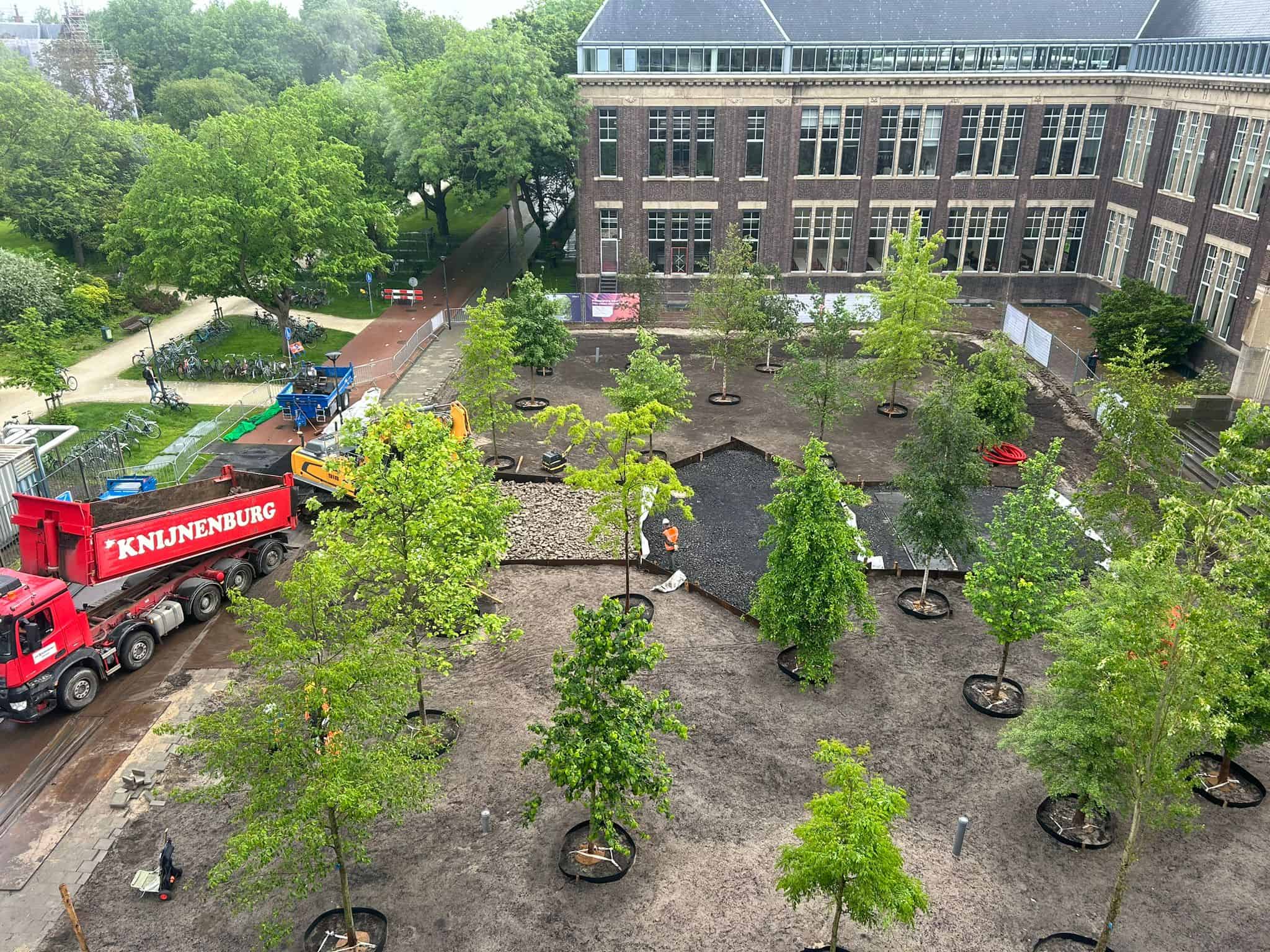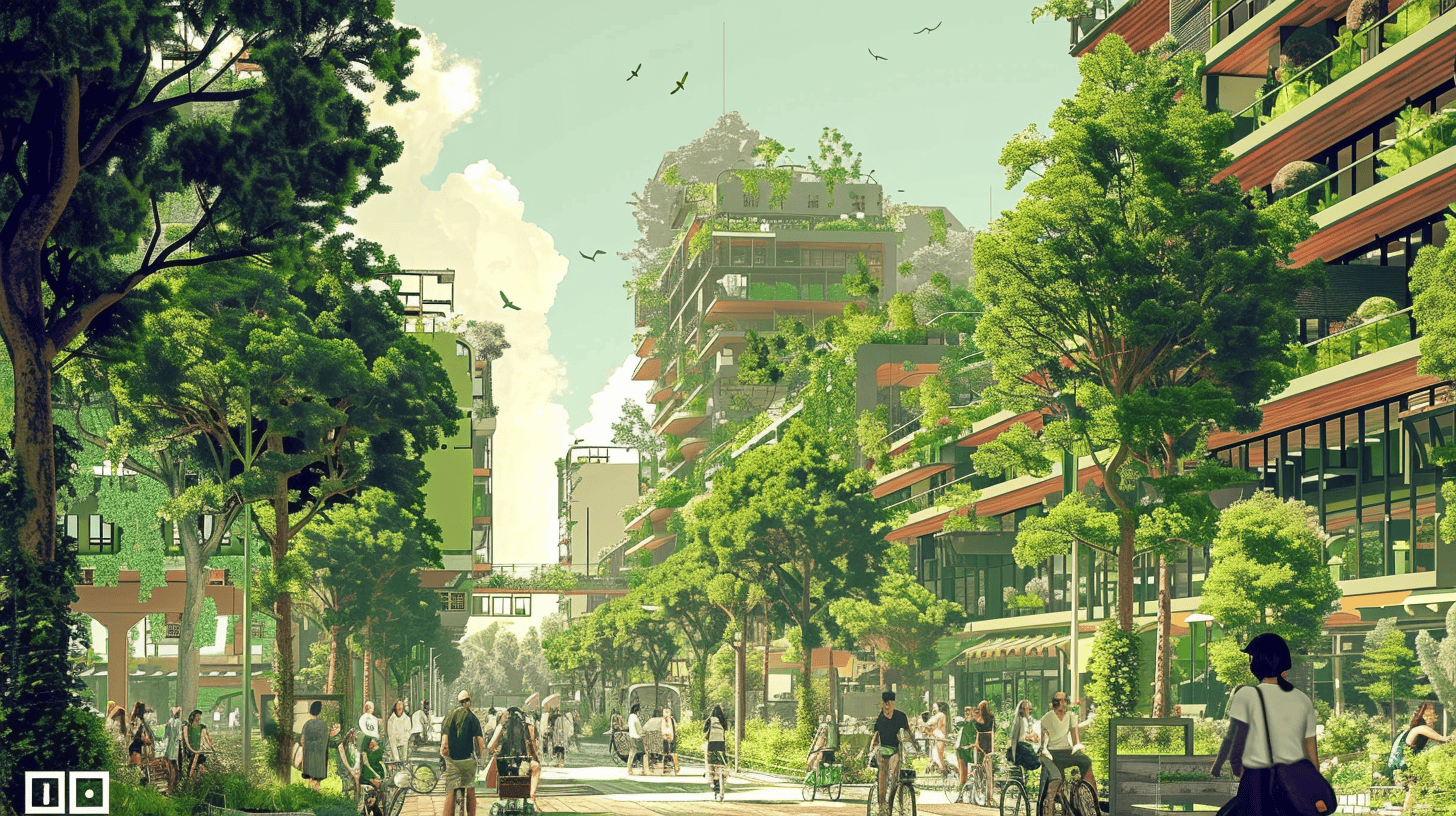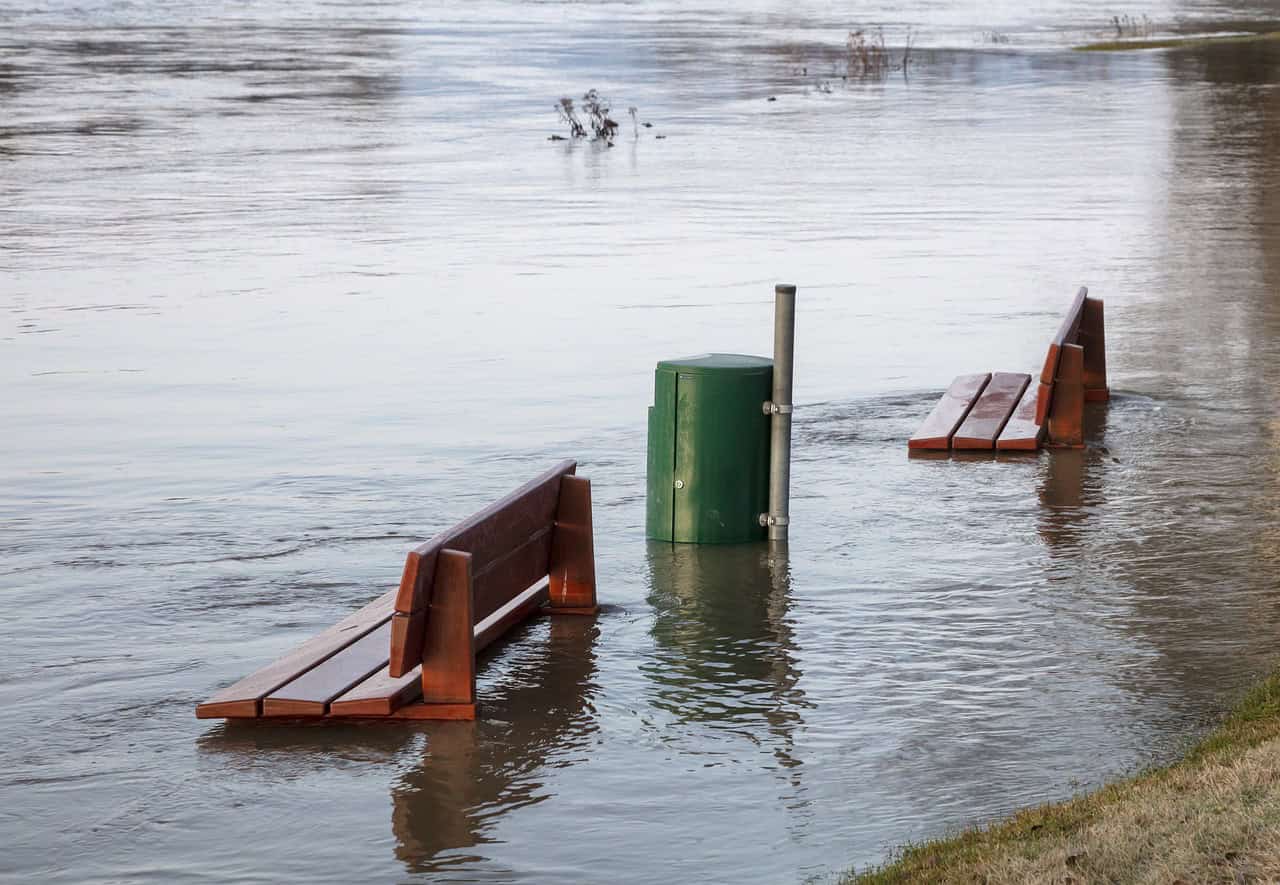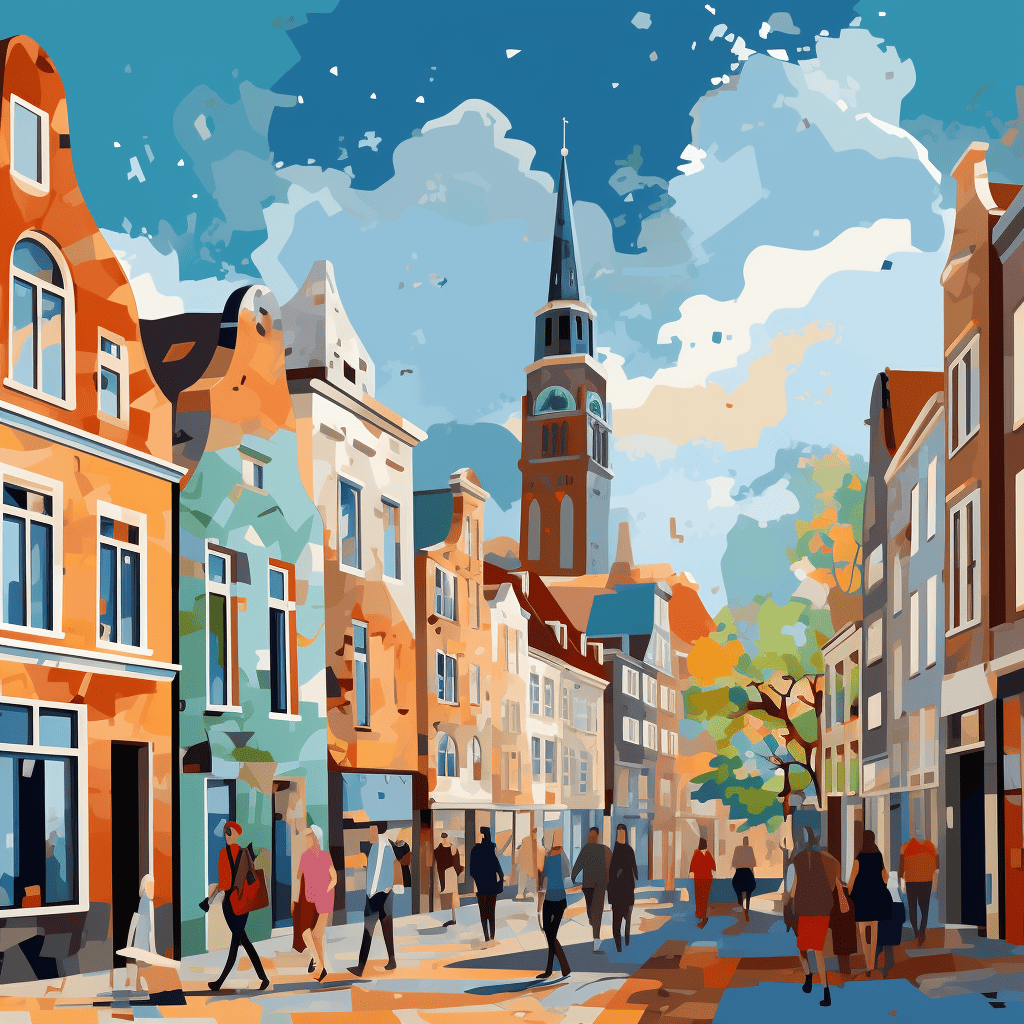
Heat has emerged as one of Europe’s greatest enemies. In the new series ‘Europe battling heat‘, IO finds out how cities (can) arm themselves against it. Today: innovative ways to build climate-proof cities.
Similar to floods and droughts, heat stress is a major challenge to deal with in climate adaptation. Heat records are being broken every year in Europe. The Copernicus Climate Change Service reports that this year we saw the hottest June on record. The European Space Agency expects the temperatures to rise even further.
In July 2023, both Bucharest and Rome witnessed land surface temperatures of 45°C, while Catania and Nicosia reached as much as 50°C. With climate taking a grip, heat waves like these will be more common and frequent, with severe consequences. Our cities cannot handle such heat stress, and necessary measures need to be taken in order to battle the extreme weather and make them more adequate for habitation.
- Rising heat stress poses a significant climate challenge in Europe, with increasing temperatures and heat waves.
- Innovative solutions, including shading techniques, light-reflecting pavement, and fake trees, are being developed at Groningen’s testing ground to combat heat stress and make cities climate-proof.
- Collaborative efforts between the government and citizens are essential to address climate change and ensure cities are adapted for sustainability by 2050.
Within BuildinG‘s testing ground at the Zernike Campus in Groningen, the Netherlands, creative and innovative ideas to help build climate-proof cities are being developed. There, researchers and students from the University of Groningen and Hanze University of Applied Sciences are working together on a wide array of solutions. In addition to tackling heat stress, they are also investigating rainwater harvesting, storage, purification and consumption, CO2 reduction, and other ways to make future cities more sustainable.
Shading and planting
“Shading and greening cities are the two most important aspects of tackling heat stress in the cities. We provide innovative shading techniques at our testing ground,” says Floris Boogaard, professor of Spatial Transformations at the Hanze University of Applied Sciences.
Hanze University of Applied Sciences partnered up with startup The Leaf to design three different types of pergolas. A pergola is a structure consisting of vertical columns that support a roof, which both act as a shade and as a support for plants to grow. The three prototypes are of different shapes and are placed in the experimental testing ground. Besides tackling heat stress, these pergolas capture water and help expand biodiversity.
One of the three prototypes named “The Square” contains sedum containers on the roof that can collect up to 155 liters of water. Tests have shown that The Square can lower the temperature by 9°C on hot summer days.
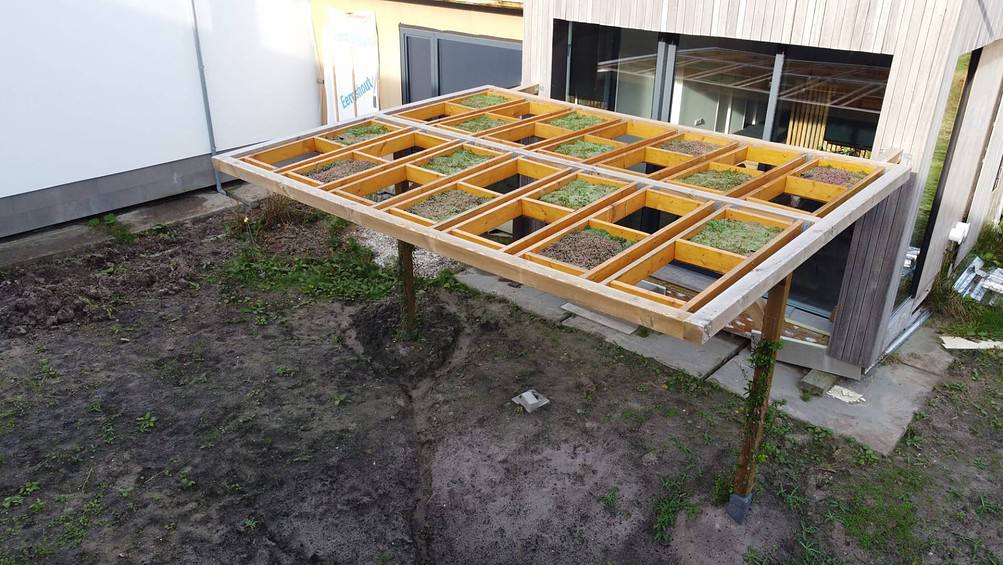
Fake Tree with multiple purposes
Cities, especially city centers can be up to seven degrees warmer than the suburbs. Mostly because of stone constructions and a lack of trees. However beneficial, they can take up a lot of space under the ground because of the way their roots grow. This can become problematic. Cables, sewers, and pipes might need to be relocated in order to plant new trees. Niels Kuijpens, a student of Industrial product design at Hanze University is working on a prototype of a fake tree. The idea is to place a fake tree that can be made with recycled materials and ivy leaves can be wrapped around them to make them green. The tree is designed in a way that it can collect and store rainwater in the water reservoir that is in its trunk. That water can not only be used to feed the ivy plant but also provide additional ballast and can be used by the local residents.
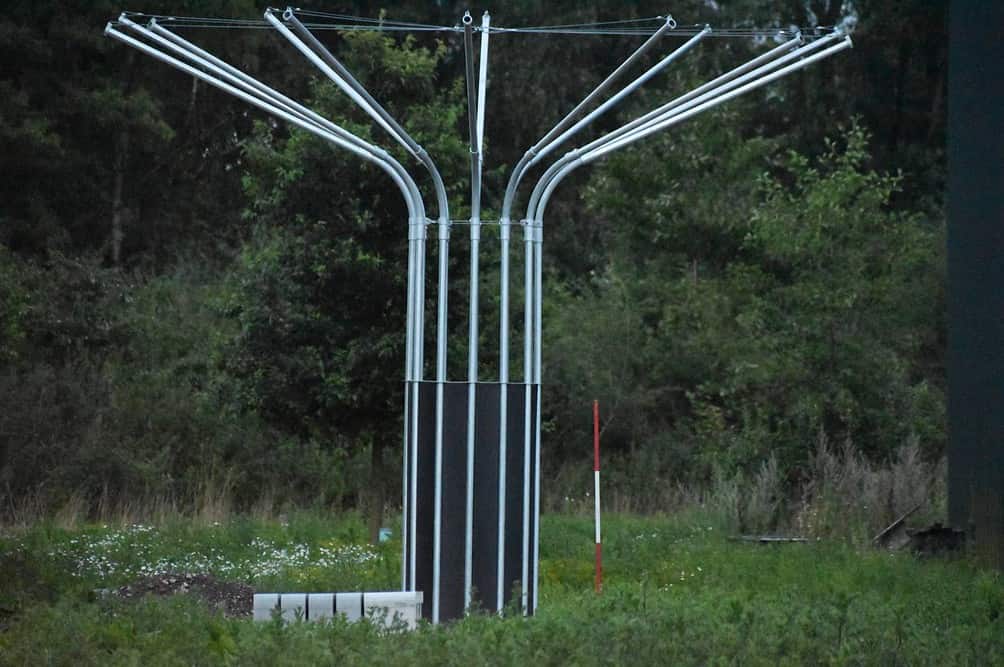
Light-reflecting pavement and asphalt
Furthermore, a light-reflecting pavement is being tested at the training ground. With this pavement, the city can heat up less during summer days. Various colors of the pavements are being compared with conventional colors. The pavement’s stones reflect the light from cars and bike headlights so that street lighting can work with less power. These light-reflecting stones also heat up less than traditional dark stones. The temperature differences can vary from 5 to 12°C in the summer.
Similarly, the light-reflecting asphalt being tested on the training ground reflects headlights and public lighting. This kind of asphalt heats up less than the conventional dark asphalt and temperature differences may vary from 8 to 15 °C in the summer. What’s more, it also helps reduce noise.
Europe battling heat
Europe is breaking heat record after heat record this summer. ESA predicts temperatures of 49 degrees, the ground temperature in Spain soared above 60 degrees Celsius, and more than 60,000 people died from heat in 2022.
Something is going wrong. That the earth keeps warming up, for a start, but besides that, EU member states’ heat plans are insufficient, while the need for them is growing.
In the series ‘Europe battling heat’ the central question is: how does Europe arm itself against heat? In the coming weeks, you can expect an article every Wednesday in which Innovation Origins solves a piece of that question. Today: innovative ways to build climate-proof cities.
Time to step up against heat stress
Boogaard believes that we need more innovative ideas such as these to tackle heat stress. The testing ground keeps developing new ideas for how our future cities should be built. Even though Groningen’s living lab helps cope with heat stress, he believes that, first and foremost, the government and the citizens have to work together to tackle climate change. “Our goal is to tackle the rising heat in the cities by 2050 but 2050 is a lot closer than it seems to be”, he says. So, there is enough work to be done.






